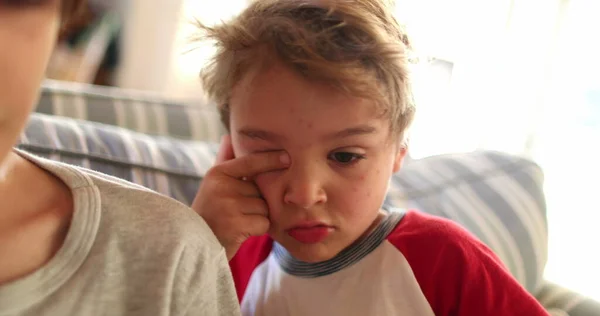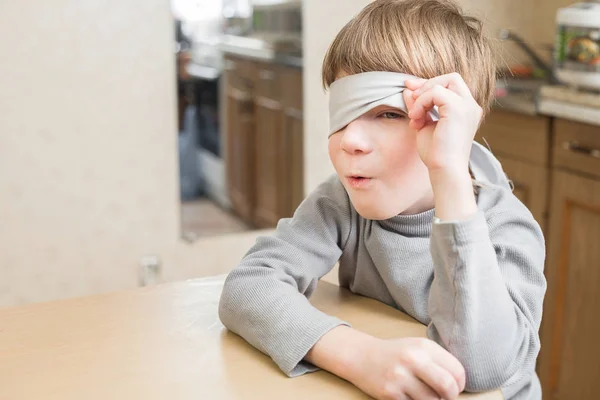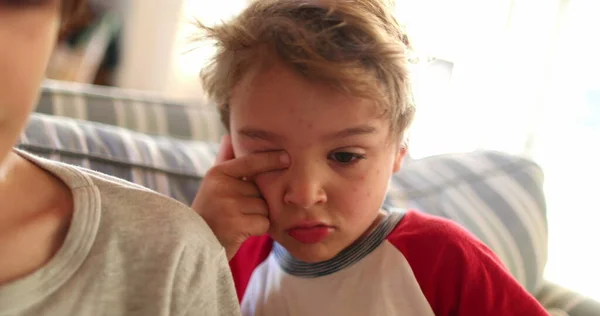Dry eyes can be a source of discomfort, especially for children, as the dryness can make their eyes feel strained. Dry eye syndrome commonly induces a sandy, gritty sensation, particularly in the morning, which tends to intensify as the day progresses. This condition may lead to blurry vision in children, although it typically does not result in lasting vision problems.
Various factors contribute to dry eyes. Frequently, dry weather, smoke, or pollution can be irritating, while allergies or the use of contact lenses can also trigger eye discomfort. Collaborating with your ophthalmologist is advisable to explore strategies that can alleviate your child’s eye discomfort. Additionally, home remedies often prove effective in providing relief.

What causes dry eyes in children?
While less common than in adults, dry eyes can affect children and cause quite a bit of discomfort. Several factors can contribute to this, ranging from environmental circumstances to underlying health conditions. Here are some of the most common causes of dry eyes in children:
Environment:
- Dry or windy air: This can evaporate tears quickly, leaving the eyes feeling dry and irritated.
- Smoke and pollution: These can irritate the eyes and disrupt tear production.
- Screen time: Staring at screens for extended periods can reduce blinking, leading to tear film instability and dryness.
Medical conditions:
- Allergies: Allergic reactions can trigger itchy, red eyes and tear overproduction, both of which can disrupt the tear film’s balance.
- Blepharitis: This inflammation of the eyelids can affect tear production and quality.
- Conjunctivitis: This inflammation of the conjunctiva (the membrane lining the eyelids and eyeball) can also disrupt tear film and cause dryness.
- Contact lens use: Wearing contact lenses, particularly without proper hygiene or for extended periods, can irritate the eyes and contribute to dryness.
- Medications: Certain medications, such as antihistamines and decongestants, can have side effects that dry out the eyes.
- Underlying health conditions: In some cases, dry eyes in children can be a symptom of an underlying health condition, such as Sjögren’s syndrome, lupus, or rheumatoid arthritis.
Other factors:
- Nutritional deficiencies: Vitamin A deficiency can contribute to dry eyes.
- Genetics: In some cases, children may be genetically predisposed to dry eye.
What are the various symptoms of dry eyes in kids?
If you suspect your child might have dry eyes, look for these signs:
- Frequent eye rubbing
- Itchy, stinging, or burning eyes
- Tired, hot, and dry eyes
- Eye redness
- Feeling like there is sand or dirt inside the eyes
- Blurred vision
- Excessive watering of eyes (paradoxically)
- Light sensitivity
- Discomfort when wearing contacts
What to do if you suspect dry eyes
If you see any of these symptoms in your child, it’s important to visit an ophthalmologist (eye doctor) for diagnosis and proper treatment. Early diagnosis and management can help prevent complications and ensure your child’s comfort.
Remember, I am not a medical professional and this information should not be taken as a substitute for professional medical advice. Always consult a doctor or qualified healthcare provider for diagnosis and treatment of any medical condition.
How to treat your child’s dry eye at home

Important note
It’s important to remember that this list is not exhaustive, and if your child is experiencing dry eyes, it’s crucial to consult a qualified healthcare professional for diagnosis and appropriate treatment. They can identify the underlying cause and recommend the best course of action, which may include lifestyle changes, artificial tears, medication, or other interventions.






